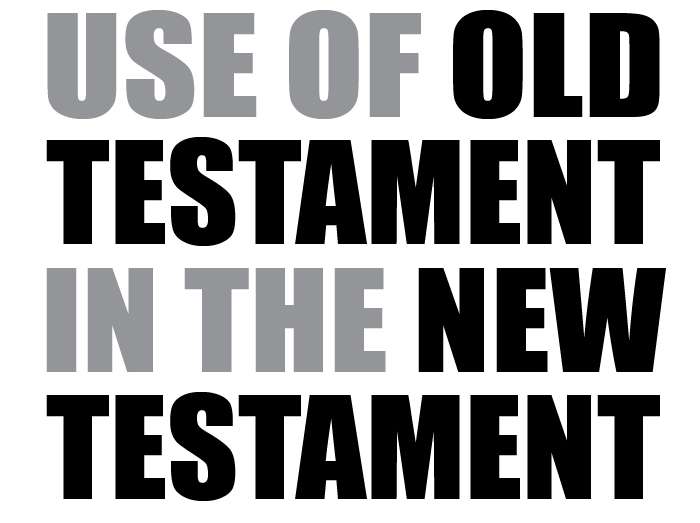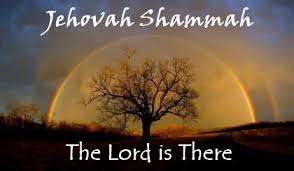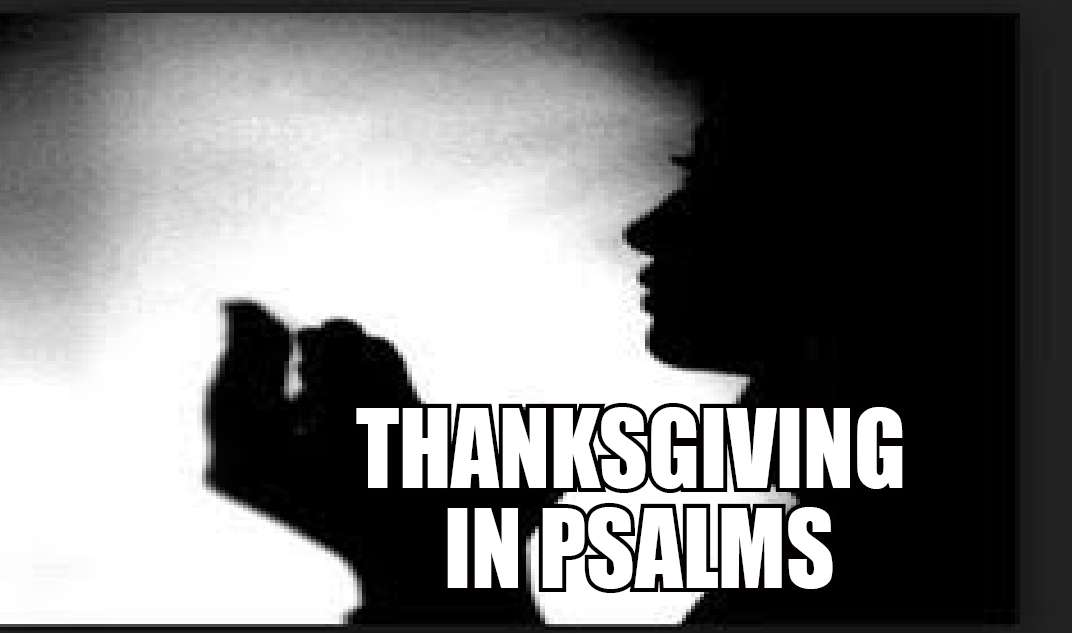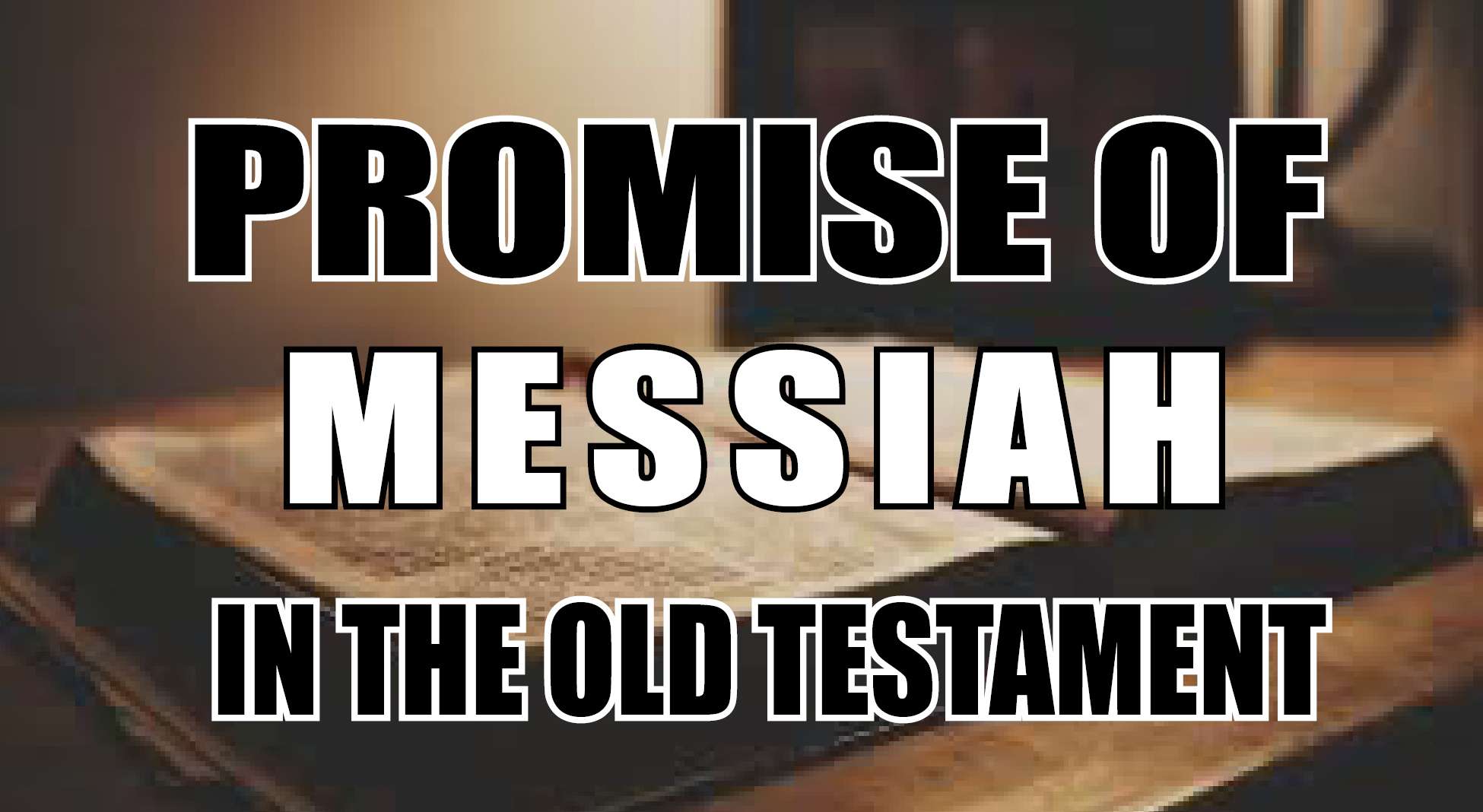

Use of Old Testament in the New Testament
Dr. Geevarughese Mathew
The relationship between the Old Testament and the New Testament is one of the striking factors that we find in the Bible. The Old Testament lays the foundation for the teachings and events found in the New Testament. Apostle Paul rightly points out that the Bible is a progressive revelation of God and all scripture is the inspired by God (2 Tim.3:16). The New Testament is completely understood only when it is seen as a fulfillment of the events, characters, laws, sacrificial systems, covenant and promises of the Old Testament. The New Testament writers included approximately 278 Old Testament quotations, 94 from the Pentateuch, 99 from Prophets and 85 from Writings. If we include indirect quotations it may go beyond 1000.
It may be noted that the whole New Testament contains not even one explicit citation from any of the Apocryphal books. It is very evident that the New Testament writers were so concerned with demonstrating the continuity between the Old Testament and the faith they proclaimed. Of the 27 books and letters forming the New Testament 21 quote from the Old Testament and the books which do not directly quote are the letters of Titus, Philemon, 1, 2, 3 John and Jude. However Titus, 1, 2 John and Jude allude to Old Testament personalities or passages. Let us briefly look into the use of Old Testament by the New Testament writers for proclaiming their faith and doctrines.
The New Testament proclaims Jesus is the promised Messiah of the Old Testament. Throughout the New Testament Jesus is presented as the Son of David, the Messiah promised in the Old Testament. Without the Old Testament we would not understand why this Messiah was coming as the `suffering servant’ (Is.53). The suffering servant in Dt. Isaiah finds it fulfillment in the life of Jesus Christ, the Messiah. The New Testament writers widely used the Old Testament to prove that Jesus Christ is the Messiah the Old Testament community expected. The reference to Jesus birth in Bethlehem (Mt. 2:1) gives weight to the idea that Jesus is the Davidic king anticipated throughout much of the Old Testament. As the birthplace of David, it is obviously significant that Jesus should also be born there. The link between Bethlehem and the Davidic king is reinforced by the quotation given in Mt.2:6, based on Micah 5:2. Jesus role as the Suffering Servant (Is.53), His manner of death (Ps. 22: 1, 7-8, Ps. 61:21 etc.), His resurrection (Ps. 16:10), and many more details of his ministry (Is.52:19ff. 9:2ff etc.) are all presented in the light of the Old Testament. They are all intended to support the basic idea that Jesus’ life fulfills Old Testament expectations regarding the house of David. New Testament presents Jesus both as the anointed one (Christ) and a descendant of David (son of David). Jesus as the son of David is demonstrated by means of a genealogy which traces a direct line of descent from King David to Joseph. Jesus is also introduced as the `son of Abraham’ that emphasizes the fact that the genealogy begins not with David but with Abraham (Mt.1:1)
The Old Testament books were the scriptures Jesus read and prayed. He found his mission and ministry in the light of the Old Testament. The passage known as the `Nazareth Manifesto’ (Lk.4:18-19) is a quotation from the book of Isaiah (61:1-2). In these scriptures Jesus found sustenance for his mission, ministry and prayer. The passage known as `Shema’ was the source of Jesus’ prayer and teaching (Dt.6:4-9). Jesus’ prayer book was the book of Psalms. On the cross Jesus prayed, “My God, My God, why have you forsaken me?” (Mk.15:34) which is a quotation from Ps.22. His prayer, “Father into your hands I commit my spirit” (Lk.23:46) comes from Ps.31:5. We understand Jesus better by reading the Old Testament. Temple in the Old Testament has been replaced by Jesus in the New Testament (Mt.12:6). Israel in the Old Testament has been replaced by the church in the New Testament.
The arguments of the New Testament writers were mostly based on Old Testament. Mt. 2:15; 4:10; 13:35; 22:44, Mk. 12:36; Lk.4:8; 20:42,43; Jn.8:17; 10:34; 19:37; Acts 23:5; Rom.4:3, 9, 23; 15:9-12; 1Cor.6:16;Gal.3:8, 16: 10:13; Heb.1:7; 2:12; 3:13; 4:7, 12-26 are examples. The names of Moses, David, Isaiah, Jeremiah, Daniel, Joel and Hosea appear in the formulas of quotations. “It is written” is one of the frequent formulas of introduction and in fact our LORD used three times in His temptation (Mt. 4: 4, 7, 10). The use of the terms Law (Jn.10:34; 15:25; Rom.3:19; 1 Cor. 14:21) or Prophets(Mt.13:35), where reference is made to passages belonging to other parts of the Hebrew Canon, indicates that the New Testament writers viewed the whole Old Testament having legal authority and prophetic character. The reference to Moses and Elijah in Lk. 9:31 represented the Law and the Prophets.
The letter to the Hebrews widely used the thoughts and patterns of the Old Testament. It is evident that the book was addressed to a community who are really familiar with the scriptures of the Old Testament. It appears that the author of the book makes use of the Old Testament in order to illuminate Christian doctrine. The letter should be rightly regarded as the earliest and fullest of the early Christian documents which sought to show how the Old Testament can be interpreted in the light of Jesus Christ. The purpose of the book is to show how Jesus is the True High Priest and His only sacrifice replaces all of the sacrifices that were mere portrayals of that sacrifice. Jesus is a priest, “after the order of Melchizedek” (Heb.4:14-9:28) to whom Abraham paid tithes (Gen.14:17-20). The book also emphasizes the relevance of Hebrew sacrificial system as explained in the book of Exodus and Leviticus. They are no longer be literally carried out but that does not invalidate their doctrinal value to the Christian. It is understood as an allusion to the sacrifice of Christ through whom alone salvation is found. The three important themes that we find in the book are: the true priesthood of Jesus as one ordained of God “after the order of Melchizedek”, the true sanctuary of God set up in heaven itself, rather than on earth, and the true sacrifice, which is that of Jesus himself in offering His own body “once and for all”. These themes are being elaborated in 4:14-10:39, with the aid of extensive citations from the Old Testament.
Apostle Paul widely makes use of the Old testament to present the Gospel throughout his letters. In 2 Tim.3:16-17 he writes, “All scripture is given by inspiration of God (God-breathed). The scripture here is definitely a reference to the Old Testament. In Rom.3:2, referring to the Old Testament, Paul says that the Jewish people “have been entrusted with the very words of God”. Referring to various incidents recorded in the Old Testament, he writes in 1 Cor.10:11 that “all these things happened to them as examples, as they were written for our admonition, upon whom the end of ages have come”. He explains the relationship between Israel and God, how Christ destroys the barrier between Jew and Gentile (Eph.2:14-18), and how Gentiles are welcome to God’s family through Christ (Rom:15:8-13). Paul uses the OT to find the gospel revealed in it all along. He uses it for the promises and prophesies about the Messiah. He uses it to explain the problem of sin and to proclaim freedom and liberation through Jesus Christ. Paul quotes from the Old Testament to clarify church issues and problems. He uses it for wisdom. Paul quotes the OT to prove that Christ brings victory. Paul does not bring forward the old rituals like animal sacrifices and circumcision. Faith in Christ’s atoning sacrifice eliminated the need of animal sacrifices. Circumcision is no longer needed as a sign of the covenant. It is now replaced by Baptism. Paul used the Old Testament to communicate the Gospel with divine authority.
It was actually Jesus who revitalized the Old Testament. We find a progression in the teachings of Jesus. The legalistic observance of law has been replaced by a new perception of the spirit of love which underlies the law. Rules regarding clean and unclean in Lev.11 is reinterpreted by Jesus. He pronounced all food clean (Mt.7:14-23). Contact with a corpse made one unclean in Leviticus. But Jesus took the dead daughter of Jairus by the hand (Lk.8:54). He gave a new meaning to the observance of the Sabbath (Mk.2:23-3:6). Leprosy made one unclean in the book of Leviticus (13-14). But Jesus touched the lepers and healed them. Jesus was not rejecting the Old Testament but He was revitalizing His own scripture by making it more meaningful to the community of believers.




